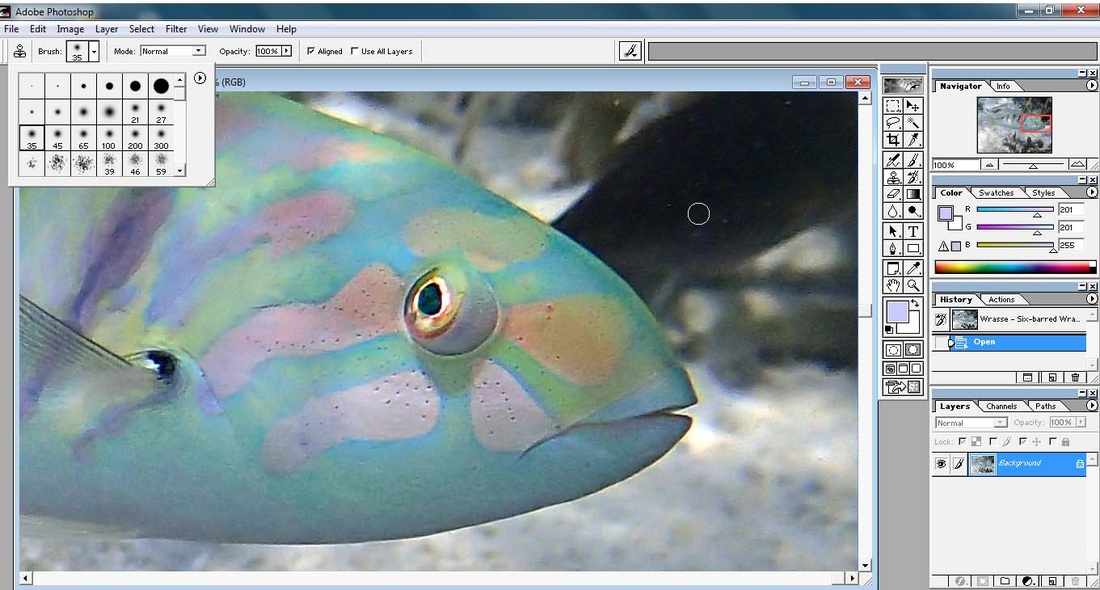Editing pictures
|
In the beginning was 1 out of my 100 pictures of acceptable quality. The success rate has increased as I have developed my skills. But still are the majority of my pictures sent straight to the waste bin.
I use Photoshop to process my pictures. In many cases are the fishes on the pictures relatively small, so I cut away “dead” material and rotate the picture when necessary to keep the picture balanced. I will then adjust the brightness and contrast of the picture. The colors can also be enhanced to a certain degree, especially when the picture was taken in shallow water. The sharpness of the picture can be enhanced as well. Finally are any white dots caused by the flash removed with a “clone” tool. |

